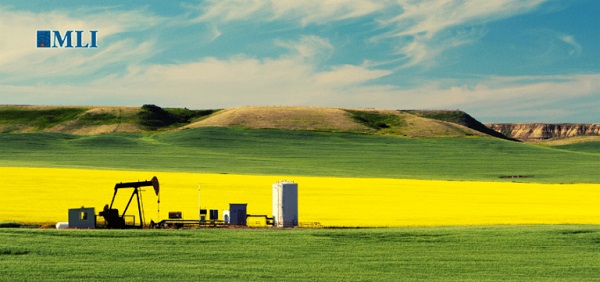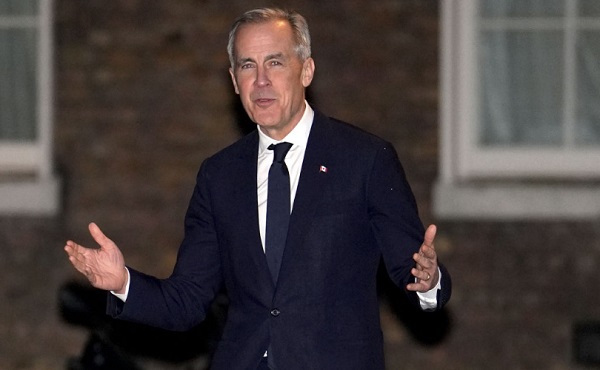Alberta
Business, not as usual

Business, not as usual. Employer support of reservists in time of pandemic.
Submitted by: Canadian Forces Liaison Council/Alberta Chapter
In this challenging time of pandemic, it’s probably safe to say that business will not carry on as usual. Employers have much to be concerned about – employees’ health and welfare, revenue, and simply put – survival.
In many cases employers have reservist-employees who balance double duty with both the Reserve Force and their workplace. Reservists are prepared willing and able to answer the call to support pandemic response or other emergencies, either nationally or locally.
Preparations for pandemic support across Canada are underway, and this includes many reservists, army, navy, air force alike, who have been asked to mobilize. It is with thanks to many employers who support their reservist-employee as they volunteer for Operation LASER 20-01 – the Canadian Armed Forces’ response to the COVID-19 pandemic within Canada.
The Government of Canada has authorized reservists, who volunteer, to be placed on full-time Class C service to support the Operation. The Canadian Armed Forces is currently mobilizing 24,000 service members, both regular and reserve, to support provincial and municipal governments and agencies in their efforts to suppress the disease, to support vulnerable populations, and to provide logistical and general support to communities. In Alberta, there will be hundreds of reservists who will choose to deploy and serve to support our communities.
The impact of the COVID-19 pandemic on Canadians has been unprecedented, as is the scale of the Canadian Armed Forces mobilization under the Operation LASER response. Reservists’ dedication to duty in volunteering for Operation LASER is essential to support both provincial and municipal authorities during this crisis. Canada cannot meet its defence needs at home and abroad without the dedicated, motivated and highly skilled people who work tirelessly to defend Canada and promote Canadian values and interests. Op LASER is the immediate need, but reservists have been and will continue to be needed to support other domestic crisis, such as floods and fires, which are occurring on a more frequent basis.
In Alberta, Employment Standards Code, outlines a reservist-employee who has completed at least 26 consecutive weeks of employment with an employer is entitled to reservist leave without pay to take part in deployment to a Canadian Forces operation inside Canada. It also outlines that all leave provided to Reservists is leave without pay – as the Canadian Armed Forces will provide the Reservist with income for the duration of their contract. It’s good business sense to keep good employees and the employment code notes that employers cannot terminate, or lay off, an employee who has started reservist leave. Although these are the legislated minimums, organizations are encouraged to develop and implement military leave policies that support a reservist-employee even further.
There is great pride for reservists as they deploy domestically and equally for the employers who support them. Undoubtedly, business will not be as usual and if you have a reservist-employee there is support available for your organization. Employer support during this time of crisis is greatly appreciated by the Canadian Armed Forces and the Government of Canada. Indeed, when you employ a reservist, you in turn, are serving your country.
How can I find out more information for my business?
• Federal Compensation for Employers of Reservists Program (CERP) – Employers can apply and eligible applicants will receive a lump sum payment, in the form of a grant, following the deployment period of the reservist employee.
- Military Leave Policy information – if your organization does not already have a formal military leave policy, this may be a good opportunity to implement one that provides additional detail beyond what is in the job protection legislation.
- Canadian Forces Liaison Council – Employers Supporting Reservists
Info for military leave policies and federal support (CERP): https://www.canada.ca/en/department-national-defence/services/benefits-military/supporting-reservists-employers.html
- With Glowing Hearts – Reservist Support Program – a turnkey employer support program for reservists. The program provides information and tools for employers of reservists and is an asset for a business to attract and retain experienced and valued reservist/employees.
Info and/or to Register: https://www.surveymonkey.com/r/WithGlowingHearts
originally published April 9, 2020.
Alberta
Big win for Alberta and Canada: Statement from Premier Smith

Premier Danielle Smith issued the following statement on the April 2, 2025 U.S. tariff announcement:
“Today was an important win for Canada and Alberta, as it appears the United States has decided to uphold the majority of the free trade agreement (CUSMA) between our two nations. It also appears this will continue to be the case until after the Canadian federal election has concluded and the newly elected Canadian government is able to renegotiate CUSMA with the U.S. administration.
“This is precisely what I have been advocating for from the U.S. administration for months.
“It means that the majority of goods sold into the United States from Canada will have no tariffs applied to them, including zero per cent tariffs on energy, minerals, agricultural products, uranium, seafood, potash and host of other Canadian goods.
“There is still work to be done, of course. Unfortunately, tariffs previously announced by the United States on Canadian automobiles, steel and aluminum have not been removed. The efforts of premiers and the federal government should therefore shift towards removing or significantly reducing these remaining tariffs as we go forward and ensuring affected workers across Canada are generously supported until the situation is resolved.
“I again call on all involved in our national advocacy efforts to focus on diplomacy and persuasion while avoiding unnecessary escalation. Clearly, this strategy has been the most effective to this point.
“As it appears the worst of this tariff dispute is behind us (though there is still work to be done), it is my sincere hope that we, as Canadians, can abandon the disastrous policies that have made Canada vulnerable to and overly dependent on the United States, fast-track national resource corridors, get out of the way of provincial resource development and turn our country into an independent economic juggernaut and energy superpower.”
Alberta
Energy sector will fuel Alberta economy and Canada’s exports for many years to come

From the Fraser Institute
By any measure, Alberta is an energy powerhouse—within Canada, but also on a global scale. In 2023, it produced 85 per cent of Canada’s oil and three-fifths of the country’s natural gas. Most of Canada’s oil reserves are in Alberta, along with a majority of natural gas reserves. Alberta is the beating heart of the Canadian energy economy. And energy, in turn, accounts for one-quarter of Canada’s international exports.
Consider some key facts about the province’s energy landscape, as noted in the Alberta Energy Regulator’s (AER) 2023 annual report. Oil and natural gas production continued to rise (on a volume basis) in 2023, on the heels of steady increases over the preceding half decade. However, the dollar value of Alberta’s oil and gas production fell in 2023, as the surging prices recorded in 2022 following Russia’s invasion of Ukraine retreated. Capital spending in the province’s energy sector reached $30 billion in 2023, making it the leading driver of private-sector investment. And completion of the Trans Mountain pipeline expansion project has opened new offshore export avenues for Canada’s oil industry and should boost Alberta’s energy production and exports going forward.
In a world striving to address climate change, Alberta’s hydrocarbon-heavy energy sector faces challenges. At some point, the world may start to consume less oil and, later, less natural gas (in absolute terms). But such “peak” consumption hasn’t arrived yet, nor does it appear imminent. While the demand for certain refined petroleum products is trending down in some advanced economies, particularly in Europe, we should take a broader global perspective when assessing energy demand and supply trends.
Looking at the worldwide picture, Goldman Sachs’ 2024 global energy forecast predicts that “oil usage will increase through 2034” thanks to strong demand in emerging markets and growing production of petrochemicals that depend on oil as the principal feedstock. Global demand for natural gas (including LNG) will also continue to increase, particularly since natural gas is the least carbon-intensive fossil fuel and more of it is being traded in the form of liquefied natural gas (LNG).
Against this backdrop, there are reasons to be optimistic about the prospects for Alberta’s energy sector, particularly if the federal government dials back some of the economically destructive energy and climate policies adopted by the last government. According to the AER’s “base case” forecast, overall energy output will expand over the next 10 years. Oilsands output is projected to grow modestly; natural gas production will also rise, in part due to greater demand for Alberta’s upstream gas from LNG operators in British Columbia.
The AER’s forecast also points to a positive trajectory for capital spending across the province’s energy sector. The agency sees annual investment rising from almost $30 billion to $40 billion by 2033. Most of this takes place in the oil and gas industry, but “emerging” energy resources and projects aimed at climate mitigation are expected to represent a bigger slice of energy-related capital spending going forward.
Like many other oil and gas producing jurisdictions, Alberta must navigate the bumpy journey to a lower-carbon future. But the world is set to remain dependent on fossil fuels for decades to come. This suggests the energy sector will continue to underpin not only the Alberta economy but also Canada’s export portfolio for the foreseeable future.
-

 2025 Federal Election2 days ago
2025 Federal Election2 days agoPM Carney’s Candidate Paul Chiang Steps Down After RCMP Confirms Probe Into “Bounty” Comments
-

 2025 Federal Election2 days ago
2025 Federal Election2 days agoLiberal MP Paul Chiang Resigns Without Naming the Real Threat—The CCP
-

 2025 Federal Election2 days ago
2025 Federal Election2 days agoFight against carbon taxes not over yet
-

 2025 Federal Election1 day ago
2025 Federal Election1 day agoMark Carney refuses to clarify 2022 remarks accusing the Freedom Convoy of ‘sedition’
-

 Automotive1 day ago
Automotive1 day agoElectric cars just another poor climate policy
-

 Energy1 day ago
Energy1 day agoWhy are Western Canadian oil prices so strong?
-

 2025 Federal Election8 hours ago
2025 Federal Election8 hours agoWEF video shows Mark Carney pushing financial ‘revolution’ based on ‘net zero’ goals
-

 Break The Needle15 hours ago
Break The Needle15 hours agoWhy psychedelic therapy is stuck in the waiting room










